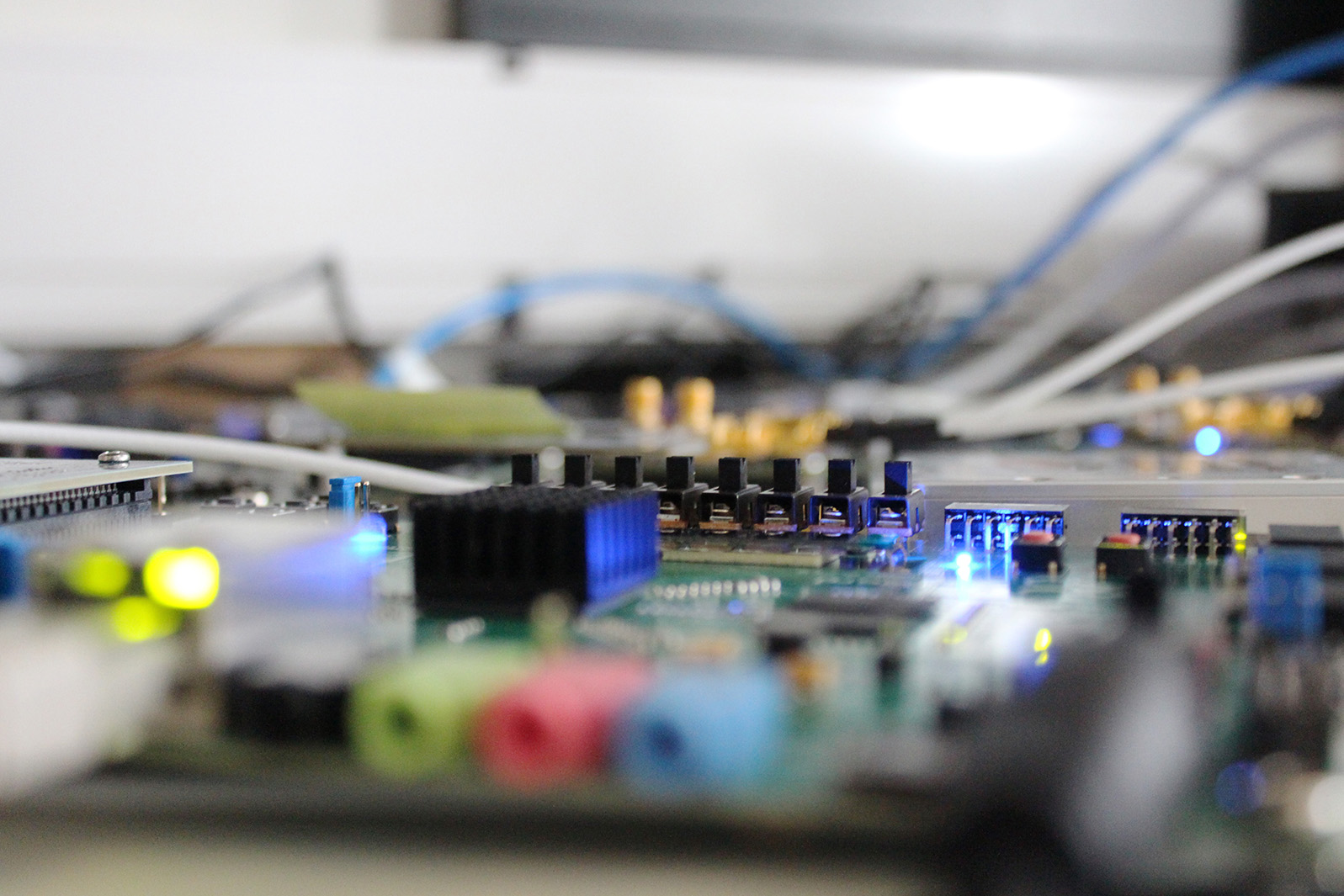NodeB for a 5G NTN NB-IoT service
The Complete NodeB Software Stack
From PHY to RRC – we deliver the full, 3GPP-compliant protocol stack, ready for integration and deployment.
Are you a satellite operator looking to offer 5G NTN enabled services? Our 5G NTN NodeB software will allow you to do just that – and with a fast time to market.
The software is applied in either a test set up or deployed into a commercial system. Our 5G NTN NodeB software is 3GPP compliant, mature and commercial off-the-shelf. We have decades of experience with developing and maintaining satellite communications protocol stacks and through our seat in ETSI and 3GPP, we have an optimal vantage point for developing the software to power 5G NTN connectivity.
The software evolves in compliance with the 3GPP releases and can be delivered for NB-IoT, eMTC and New Radio.

Features
The NodeB software includes Physical Layer (PHY), Medium Access Control (MAC), Radio Link Control (RLC), Radio Resource Control (RRC), and is available in platform independent standard C++ code and can be ported to several COTS hardware platforms.
- 3GPP NTN compliant
- Highly generic and portable
- Standalone mode of operation enabling narrow channel standalone deployment
- Can be integrated on COTS SDR hardware
- Interoperability tested with Gatehouse Satcom UE software and Commercial Test Equipment
- Debugging interface
- Higher level interface for ephemeris
- Operations and Maintenance interface support
Why work with Gatehouse Satcom?
Easy enabling of satellite networks
Let us help you enable your 5G NTN roadmap. Gatehouse excels in developing protocol software that enables a seamless satellite connectivity even in remote areas of the world. Our end to end solution fits to available NTN chipsets and SDR payload hardware.
Gain a competitive advantage
Save time and improve your business case. Normally, it takes years and cost a lot to develop a reliable and advanced protocol stack for a 24/7 working satellite service, but by using an already proven solution, you can focus on your business and serving your clients instead of dealing with technical difficulties. This will give you a competitive advantage.
Fast time to market and reduced risks
Shorten your time to market and reduce risk. With 5G NTN NodeB software from Gatehouse, you get already proven software reducing risks and ensures fast time-to-market.

GEO transparent mode and NGSO regenerative mode
The 5G NTN NodeB software is currently available for GEO transparent mode with NGSO Regenerative mode being on the roadmap.
In transparent mode, the satellite works as mirror between ground station and user equipment, also known as bent pipe operation. Regenerative mode means that signal processing is already done in the satellite, and that parts of the network infrastructure functionality are executed in the satellite.
Only transparent mode is supported by the standardization provided in release 17, while regenerative mode is discussed by 3GPP for later releases. Transparent mode fits nicely with existing GEO based satellite systems while it requires a substantial effort to make it work for NGSO satellite systems and furthermore, service is only possible when user equipment and ground station are both in view/reach of the satellite and communication is possible.
FAQ
When is the 5G NB-IoT waveform (NodeB) ready?
We are developing the 5G NB-IoT software as part of the official 3GPP standardization group. This means that the NodeB will be commercially available adhering to the standardization´s timeline. This is the beginning of 2024 (for Rel. 18 – for regenerative mode). Rel.17 (transparent mode) will already be commercially available by mid 2022.
To be ready when 5G NB-IoT kicks off officially, we recommend reviewing your system set-up and satellite fleet already today. We will be happy to guide you through that.
Are you assuming the GSO system having several simultaneous gNB cells (one in each beam?)
This is not an assumption in our framework for analysis, but in general our understanding is that a GSO would want to provide individual cellular service within each beam to increase spectral and power efficiency. In the bent-pibe architecture this requires a wide feeder-link to be sliced and shifted in frequency for each beam or some other efficient encapsulation of the RAN in the feeder link.
How does the 5G NB-IoT software protocol differ for NGSO and GSO satellites?
Major differences are on the satellites´ infrastructure. One example is the different location of the NodeB functionality.
For help in assessing how your satellite system set-up can support 5G NB-IoT connectivity, please do contact us.
Insights
Explore our articles, webinars and releases and see how we and our clients are unlocking the power of satellite communications.
5G technology
Let’s get in touch

Raphaela Teixeira
Sales Executive
I look forward to discuss your current roadmap for 5G NTN and show how we can help you strengthen it.
Please reach out to me or fill out this form to start a conversation.



